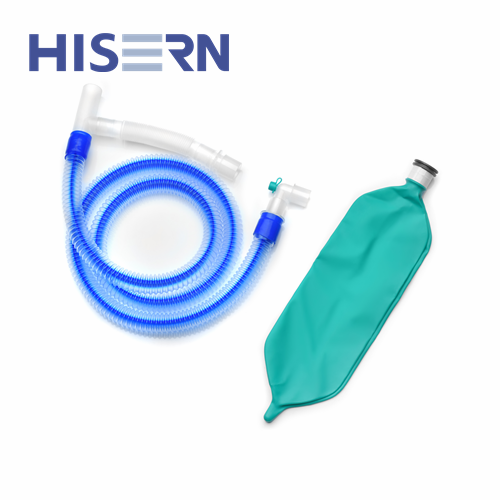Crop science fertilization is one of the important factors that affect the level of yield. Different types of crops and growth stages should be adapted to the fertilizer. Do not use fertilizers at will. Following these fertilization taboos, you can take good care.
1. Carbon ammonium avoids mixing with urea
The amide nitrogen in urea cannot be absorbed by crops. Only by the action of adenosine in the soil, can it be converted into ammonium nitrogen before it can be applied to the soil by the crop using ammonium bicarbonate, resulting in a short-term acidic reaction of the soil solution and accelerating urea. Because of the loss of volatile nitrogen, it cannot be mixed. Ammonium bicarbonate can not be mixed with the bacterial fertilizer, because the former will emit a certain concentration of ammonia gas, which is toxic to the active bacteria of the latter, will make the fertilizer lose its fertilizer effect.
2. Avoid watering immediately after urea application
Urea is applied to the soil and converted into amide, which is easy to run off with water. It cannot be watered immediately after application, nor can it be applied before heavy rain, and soil application after application can increase fertilizer efficiency.
3. Nitrate nitrogen fertilizer applied in rice fields
Ammonium nitrate, sodium nitrate, etc. will dissociate nitrate ions, which can easily be leached to the deep layer of the soil in the rice field, resulting in denitrification and loss of nitrogen; nitrate nitrogen fertilizer applied in dryland is also forbidden to use before heavy rain, or watering after application.
4. Avoid long-term application of ammonium sulfate
Ammonium sulphate is a physiological acid fertilizer that is applied in the same soil for a long period of time, which will increase its acidity and destroy the structure of the granules. In the alkaline soil, the ammonium ions of ammonium sulphate are absorbed, and the acid ions remain in the soil and react with calcium to make soil compaction. Hardened.
5. Avoid the application of ammonium bicarbonate
Should be applied deep below 6 cm. Immediately after application, cover soil. It is also not suitable for use in greenhouses, because ammonium bicarbonate, commonly known as gas fertilizer, is easily decomposed into ammonia in the greenhouse and volatilizes, causing waste; and when the ammonia concentration is too high, it also burns crop leaves.
6. N-containing compound fertilizer should not be applied to legumes
Soybeans, mung beans, peanuts and other leguminous crops have nitrogen-fixing rhizobia. Too much application of nitrogen-containing compound fertilizer will not only cause waste, but also inhibit the activity of rhizobial bacteria, reduce its nitrogen fixation capacity, and make the crops mature late, affecting the yield. .
7. Acidic fertilizer avoids mixing with alkaline fertilizer
Ammonium bicarbonate, ammonium sulfate, ammonium nitrate, and ammonium phosphate cannot be mixed with alkaline fertilizers such as grass ash, lime, and kiln ash, and neutralization reactions will occur, resulting in loss of nitrogen and reduction of fertilizer efficiency.
8. Avoid application of phosphate fertilizer
Phosphate fertilizers are not suitable for dispersed use. They must be concentrated and not spread to prevent them from being fixed. It is best to apply them in the vicinity of the root system. At the same time, fertilizers with higher phosphorus content are not suitable for use in vegetables.
9. Potash fertilizer is not allowed to be applied at the end of the crop
Potassium can be transferred from the lower stems and leaves of the crop to the top of the delicate part. The symptoms of potassium deficiency are later than the symptoms of nitrogen deficiency and phosphorus deficiency. The potassium fertilizer is best used as a base fertilizer, or applied at the seedling stage.
10. Containing chlorinated fertilizers, avoid application to saline soils and chlorine crops
Chloride ions contained in chlorinated fertilizers will remain in the soil, leading to acidification of the soil, which will increase the salt damage in saline-alkali fields. Application on chlorine-inhibited crops will affect the yield and quality. Contrary to chlorine crops, there are tobacco, fruits, beets and potatoes. Class, watermelon and so on.
11. Direct use of unripe farmyard fertilizers and fat tabs
Without direct use of cooked farmhouse fertilizers and cakes and fertilizers, the farmer's manure and cakes should be fully decomposed before they can be used after high temperature disinfection or chemical treatment.
12. The rare earth micro-fertilizer is directly applied to the soil
The rare earth micro-fertilizers are applied directly to the soil but they should be used as seed fertilizers or foliar fertilizers.
12 taboos, do you all know? The compact maize varieties used in current production often have the phenomenon of “false cookingâ€, that is, the maize leaves are whitened earlier and the seeds have not yet stagnated. These varieties are often harvested early. In production, the milk grain of the lower part of the corn ear dissipated, the grain moisture content was about 30%, the grain weight was the highest when the leaves were turned white and loose, and the corn yield was also the highest, which can be used as the main sign of proper harvest. At the same time, the formation of the black layer at the base of the corn grain is also an important reference index for proper harvesting.

Objective To evaluate the methods and the effects of an Airway Management nursing team in clinical practice
Airway Devices,Laryngeal Mask Airways,Extraglottic Airway Devices,Supraglottic Airway Devices
Zhejiang Haisheng Medical Device Co., Ltd , https://www.hisernmedical.com
